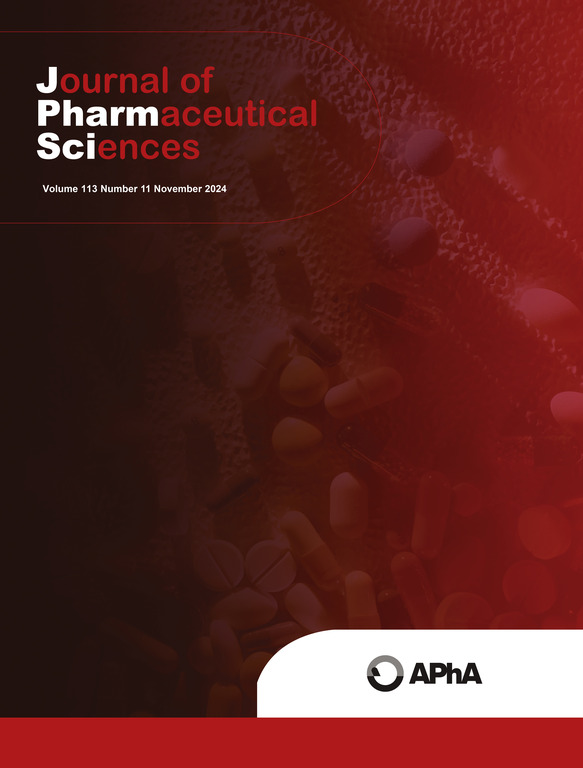布比卡因、肾上腺素和纳布啡在 0.45%氯化钠、0.9%氯化钠或血浆-Lyte A 中的物理兼容性和化学稳定性。
IF 3.8
3区 医学
Q2 CHEMISTRY, MEDICINAL
引用次数: 0
摘要
目的:评估布比卡因、肾上腺素和纳布啡在 0.45%氯化钠、0.9%氯化钠或 Plasma-Lyte A 中混合时的物理相容性和化学稳定性:将 0.5%布比卡因(15 毫升)、1 毫克/毫升肾上腺素(0.15 毫升)和 10 毫克/毫升纳布啡(0.5 毫升)与 0.45% 氯化钠、0.9% 氯化钠或 Plasma-Lyte A 混合,制备三种不同的混合物。在 0、1、5、8 和 24 小时进行目测、分光光度分析、pH 值评估和高效液相色谱测试。样品在室温、环境光下保存:结果:没有发现任何样品在视觉变化、分光光度吸光度或 pH 值方面发生明显变化。在所研究的每种液体中,剩余药物浓度平均为 100.92% 布比卡因、95.8% 肾上腺素和 100.02% 纳布啡:结论:布比卡因、肾上腺素和纳布啡的组合在室温下 24 小时内具有物理相容性和化学稳定性。本文章由计算机程序翻译,如有差异,请以英文原文为准。
Physical compatibility and chemical stability of bupivacaine, epinephrine, and nalbuphine in 0.45 % sodium chloride, 0.9 % sodium chloride, or plasma-lyte A
Purpose
To evaluate the physical compatibility and chemical stability of the combination of bupivacaine, epinephrine, and nalbuphine when in mixed in 0.45 % sodium chloride, 0.9 % sodium chloride, or Plasma-Lyte A.
Methods
Bupivacaine 0.5 % (15 mL), epinephrine 1 mg/mL (0.15 mL), and nalbuphine 10 mg/mL (0.5 mL) were combined to prepare three distinct admixtures with 0.45 % sodium chloride, 0.9 % sodium chloride, or Plasma-Lyte A. Visual inspection, spectrophotometric analysis, pH evaluation, and high-performance liquid chromatography tests were conducted at hours 0, 1, 5, 8, and 24. Samples were stored in ambient room light at room temperature.
Results
There were no demonstrable changes identified in any of the samples with regards to visual changes, spectrophotometric absorbance, or pH. In each studied fluid, the remaining drug concentrations were an average of 100.92 % bupivacaine, 95.8 % epinephrine, and 100.02 % nalbuphine.
Conclusions
The combination of bupivacaine, epinephrine, and nalbuphine was found to be physically compatibility and chemically stable for a period of 24 h at room temperature.
求助全文
通过发布文献求助,成功后即可免费获取论文全文。
去求助
来源期刊
CiteScore
7.30
自引率
13.20%
发文量
367
审稿时长
33 days
期刊介绍:
The Journal of Pharmaceutical Sciences will publish original research papers, original research notes, invited topical reviews (including Minireviews), and editorial commentary and news. The area of focus shall be concepts in basic pharmaceutical science and such topics as chemical processing of pharmaceuticals, including crystallization, lyophilization, chemical stability of drugs, pharmacokinetics, biopharmaceutics, pharmacodynamics, pro-drug developments, metabolic disposition of bioactive agents, dosage form design, protein-peptide chemistry and biotechnology specifically as these relate to pharmaceutical technology, and targeted drug delivery.

 求助内容:
求助内容: 应助结果提醒方式:
应助结果提醒方式:


